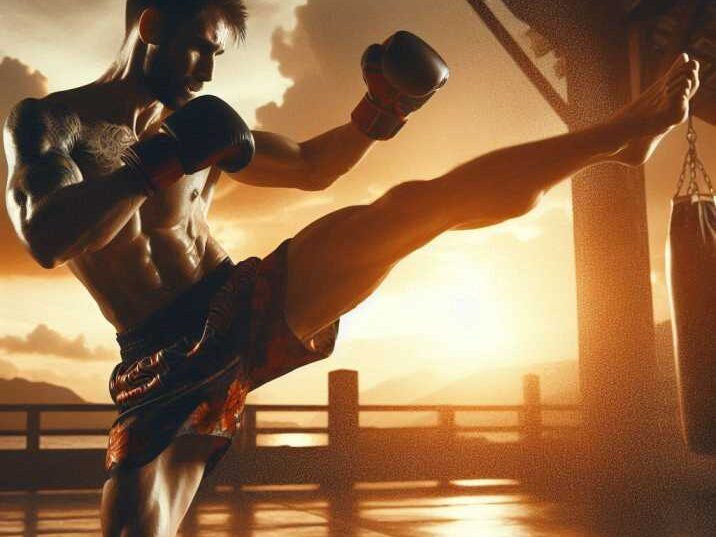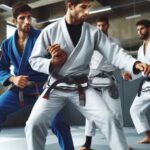Introduction
Table of Contents
Thai boxing, more commonly known as Muay Thai, is a popular combat sport from Thailand that combines striking techniques, powerful kicks, elbow strikes, and clinching techniques. Known as the “Art of Eight Limbs” due to its use of hands, elbows, knees, and feet, Muay Thai is not just about physical strength. Training in Muay Thai requires high levels of focus, dedication, and discipline, which are qualities that can positively influence other areas of life, such as school and personal relationships.

What is Muay Thai? A Closer Look at Thai Boxing
Origin and History of Muay Thai
Muay Thai has deep cultural roots in Thailand, originating over a thousand years ago. It developed as a form of hand-to-hand combat that was used by Thai warriors to protect their kingdom. Over time, Muay Thai evolved into a sport that is now practised worldwide and has become a key feature in mixed martial arts (MMA).
Key Milestones in Muay Thai’s History
| Year | Milestone |
|---|---|
| 16th century | Muay Thai is used by Thai soldiers for self-defence. |
| Early 1900s | Became a regulated sport in Thailand with rules. |
| 1920s | Boxing gloves and a ring were introduced. |
| 1990s | Muay Thai gained international recognition. |
How is Muay Thai Different from Other Combat Sports?
Muay Thai is unique in its use of “eight limbs”: two hands, two elbows, two knees, and two feet. This makes it different from other sports like boxing, which primarily uses only punches, and karate, which focuses on kicks and strikes but rarely includes elbow or knee strikes.
Benefits of Muay Thai Training
Learning Muay Thai brings various physical, mental, and emotional benefits. Let’s explore these benefits in detail:
Physical Fitness and Strength
Muay Thai is an intense full-body workout. It helps build strength, endurance, and flexibility as practitioners learn how to strike, block, and defend. Regular training also improves cardiovascular health and enhances agility.
Discipline and Mental Focus
One of the most significant benefits of Muay Thai training is its emphasis on discipline and focus. Practicing Muay Thai requires full concentration, as each move is precise and requires attention to detail. This intense focus can carry over into other areas of life, such as school and work.
Self-Confidence and Emotional Resilience
Muay Thai training instils self-confidence and resilience in its practitioners. Facing challenges in the gym and working through tough training sessions can increase mental toughness and self-assurance, which can be beneficial for kids and adults alike.
Essential Techniques in Muay Thai
In Muay Thai, there are several key techniques that every practitioner must master:
Punches
Punches in Muay Thai include jabs, crosses, hooks, and uppercuts. While punches are similar to those in Western boxing, they are combined with other moves to create unique combinations.

Kicks
Muay Thai kicks are powerful and involve using the shin rather than the foot. The roundhouse kick is a fundamental move in Muay Thai, often targeting the opponent’s legs, body, or head.
Elbow Strikes
Elbow strikes are short-range techniques, making them effective for close combat. There are several types of elbow strikes, such as the horizontal elbow, uppercut elbow, and spinning elbow.
Knee Strikes
Knee strikes are powerful moves that can target various parts of the opponent’s body. They are often used in the clinch, a close-range hold where fighters lock arms to restrict each other’s movement.
What to Expect in Muay Thai Training
- Warm-Up: A Muay Thai class often starts with a warm-up that includes activities like jumping rope, shadowboxing, and dynamic stretching. This prepares the body, increases blood flow, and loosens up the muscles for more intense movements.
- Technical Drills: During technical drills, students practice punches, kicks, and defensive maneuvers with focus pads or with a partner. This segment improves precision and technique, helping fighters develop muscle memory for each movement.
- Sparring: Sparring allows students to apply techniques in controlled practice matches, building confidence and experience. It’s a safe way to test skills, learn timing, and develop reflexes in a real combat scenario.
- Strength and Conditioning: This part of training involves exercises like push-ups, sit-ups, and weightlifting, which build core strength and stamina. These exercises help fighters endure longer sessions and increase their overall physical power.
- Cool-Down: At the end of class, stretching and relaxation exercises are essential to help the body recover and prevent injuries. Cool-downs aid in flexibility, reduce muscle soreness, and promote faster recovery.
How Muay Thai Builds Life Skills for Students
- Focus in School: Muay Thai requires intense concentration, which translates to better focus in academics. The discipline of training helps students pay attention, avoid distractions, and complete their work more effectively.
- Goal Setting: Setting and achieving goals is a core aspect of Muay Thai training, like mastering a new technique or advancing to a higher belt. This teaches students to set realistic goals and work towards them, which can be useful in school and personal life.
- Stress Management: Physical activity in Muay Thai releases endorphins, which help reduce stress and improve mood. Students who practice Muay Thai can use this physical outlet to manage the pressures of school and other responsibilities.
- Discipline and Responsibility: Muay Thai instils discipline through structured routines and regular practice, which can increase a student’s sense of responsibility. The commitment to training fosters self-discipline that can benefit their studies and other areas of life.
- Self-Confidence: As students progress and overcome challenges in Muay Thai, they gain confidence in their abilities. This self-assurance helps them face academic challenges and social situations with greater ease and positivity.
Conclusion
Thai Boxing, or Muay Thai, is a fascinating and effective martial art that builds both physical and mental strength. From its historical roots in Thailand to its global popularity today, Muay Thai continues to inspire and empower practitioners. With dedication, training in Muay Thai can improve focus, boost self-confidence, and provide valuable life skills that can benefit students both inside and outside the classroom.
FAQs
1. What is Thai boxing also called?
Thai boxing is also known as Muay Thai.
2. Is Muay Thai suitable for kids?
Yes, Muay Thai can be suitable for kids, as it builds discipline, focus, and fitness.
3. Does Muay Thai help with self-defense?
Yes, Muay Thai is effective for self-defense due to its powerful techniques.
4. Can Muay Thai improve focus in school?
Yes, Muay Thai training enhances focus and concentration, which can benefit academic performance.
5. What equipment is needed for Muay Thai?
Basic equipment includes gloves, shin guards, and a mouthguard.


